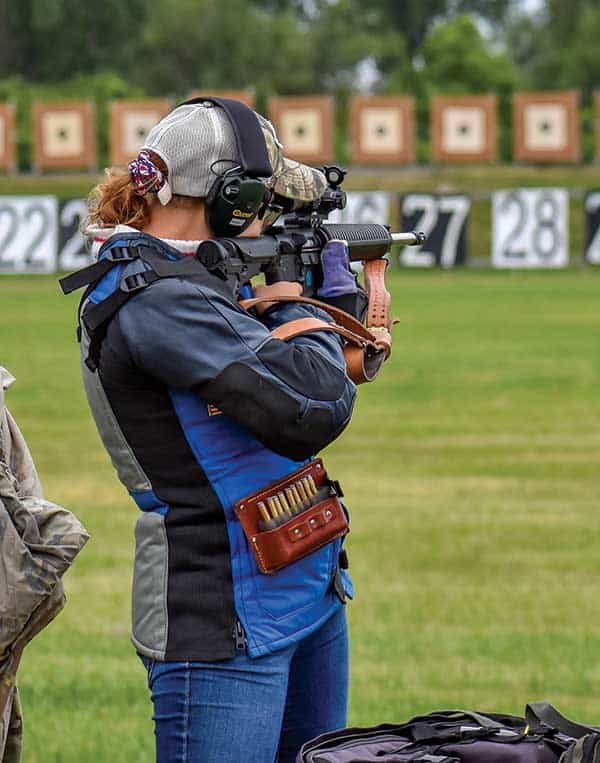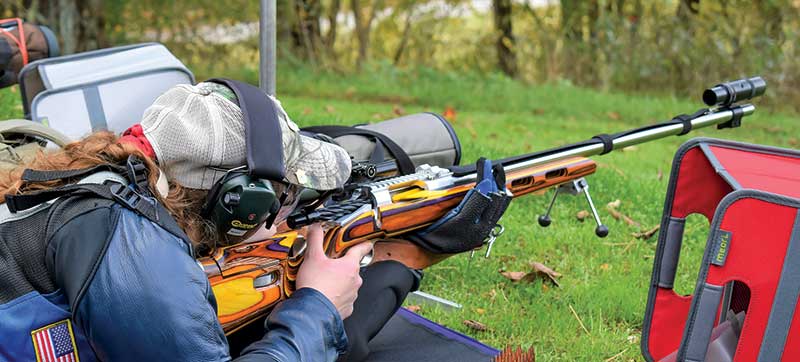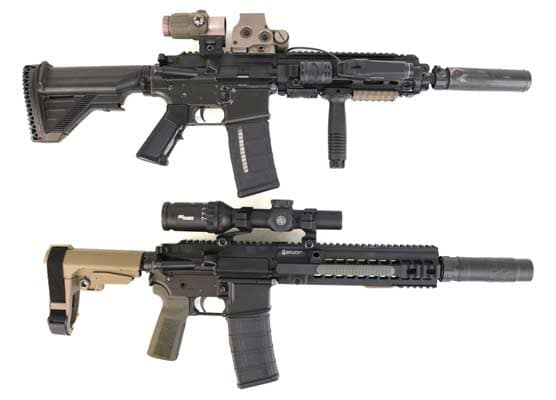Student Handgunner
A Rifle Competitor Takes On … Handguns
Is the safety on? I thought to myself as I continued to put steady pressure on the trigger. I noticed I was anticipating a shot that had not yet come, subsequently yanking the trigger the rest of the way. I realized how spoiled I am with my rifle match triggers.
I compete in High Power Service Rifle and Palma; Distinguished in the former and new, but progressing in the latter. In service rifle I shoot an MSR with a two-stage 4.5-lb. trigger from 200, 300 and 600 yards. I’m still getting used to the 2-lb. single-stage trigger in my .308 long-range gun, which I’m sure contributed to my astonishment at the weighty trigger on my Kimber .380 ACP carry gun.
You see, while I’ve got plenty of hours behind rifles, handgunning is a new learning endeavor for me.
Hello … Handguns?
My first experiences with handguns took place after junior .22 smallbore rifle practice. Held Thursday nights, this was not only a time to train but a social event, providing me an escape from high school and the pettiness and homework that came along with it. I came to view shooting rifles as more serious practice — the occasional handgun shooting just a fun bonus. This doesn’t mean I didn’t learn anything. I can fire handguns safely, though I’m disappointed in my current target abilities, especially with calibers larger than a .22 and at distances farther than 10 yards.
Coming from a competitive rifle background, my thoughts of pistol shooting have long coincided with similar more stationary competitions, such as bullseye or silhouette. Run and gun pistol events were something I didn’t know existed. The idea of moving and shooting completely baffled me. As someone used to minimizing body movement, tweaking muscle tension and carefully measuring breathing — it appeared the polar opposite of everything I knew.
A .44 Mag S&W Model 29 was one of the first pistols I fired, and the recoil surprised me just a bit. Go big or go home, right? My coach, John Ross, showed me how to better grip the gun and not to lock my arms completely, as over time it could put considerable strain on my joints.
He brought many different handguns for me and the other juniors to try, including a Hi-Standard Supermatic Trophy and a .357 Magnum revolver. I quickly learned I preferred semi-automatics to revolvers. I assumed I wasn’t made to shoot revolvers, but John explained the importance of grip fit and the reason the pistol seemed to be falling out of my hands — it was the wrong size for me.
A Rude Awakening
As someone accustomed to punching small holes in the center of targets out to 1,000 yards, I’ve learned to accept smaller victories and move on to larger goals. I don’t expect handgun mastery to come right away. I want one thing — to improve. Though not an experienced pistol shooter, I’m far from unfamiliar — largely because of the skills and principles I can transfer from rifle.
Taking steps now to be a better and more accurate pistol shot can help me in more ways than one — diversifying my skills and increasing my confidence as a concealed carry permit holder. I know marksmanship is important, but the types of competition I’ve been exposed to, even on such small levels, differ vastly from defensive shooting.
Though I’m still new to the concealed carry and personal defense world, I get the importance of ongoing learning and training. While attending college on an urban campus only miles from East Cleveland, “protected” by an inadequate campus police department, I learned precisely why. Armed robberies, carjackings and assaults — the frequent email alerts came to not only be expected but accepted among the student populace.
My freshman year I was confronted by a man I didn’t know on the way back to my dorm. Luckily a car driving by pulled between me and the apparent drug-addled stranger, shielding me until I was safely out of harm’s way. In that moment, I understood the need to protect myself and that anything could happen anywhere.
Firearms weren’t permitted on campus and I wasn’t yet old enough to carry one, but I’ll never forget the feeling of being helpless. Now 21 and out of college, I’m entering a whole new world of handgun shooting and self-defense. I’m looking forward to the next steps in my ongoing education.







